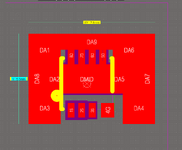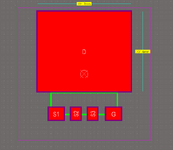cupoftea
Advanced Member level 6

Hi,
As you know smd fets come in mostly either 3x3mm or 5x6mm packages.
If they both occupy the same PCB area, with copper pour around the package,
then the 3x3mm will always run cooler (other things being equal), since it will
have more exposed PCB copper.
So why do they not advertise this on the datasheet?
As you know smd fets come in mostly either 3x3mm or 5x6mm packages.
If they both occupy the same PCB area, with copper pour around the package,
then the 3x3mm will always run cooler (other things being equal), since it will
have more exposed PCB copper.
So why do they not advertise this on the datasheet?


